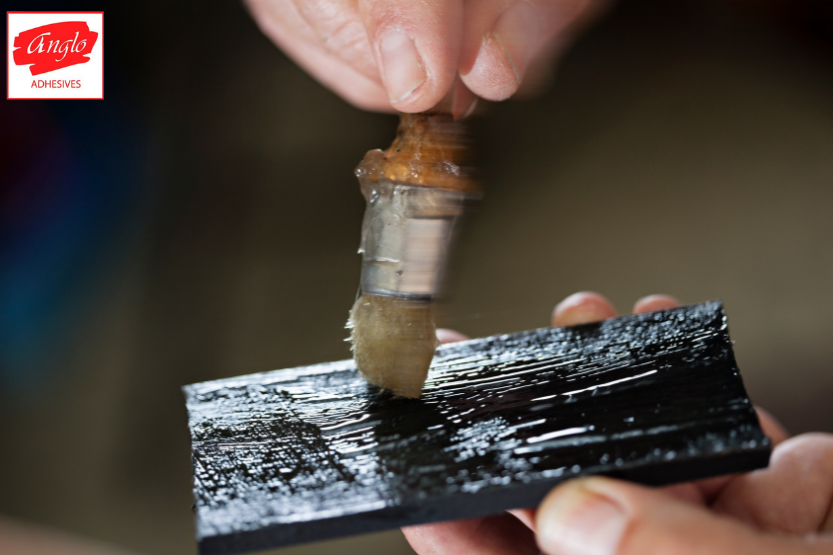Blog
The Best Adhesive for Rubber to Rubber Lasting Bonds

Bonding rubber to rubber is a typical task in a variety of industries, including automotive and manufacturing. While it may appear simple, forming a permanent bond between two rubber surfaces can be quite difficult. Despite the abundance of adhesive for rubber to rubber applications available, many fall short of providing the necessary durability and dependability.
Rubber, a versatile material known for its elasticity and resilience, presents unique obstacles to adhesion. Its inherent flexibility means that any bond must be equally flexible to prevent failure. Rubber also contains oils and has a porous structure, which might interfere with adhesive performance. As a result, choosing the correct adhesive is critical to producing a strong and long-lasting rubber-to-rubber bond. This article looks into the important elements to consider and discusses the finest adhesive alternatives available.
Factors Affecting Adhesive For Rubber to Rubber
Achieving a strong and lasting rubber-to-rubber bond depends on several key factors. Understanding these elements is crucial for selecting the right adhesive and ensuring optimal results.
- Rubber Type: The type of rubber significantly influences adhesion. Moreover, natural rubber, synthetic rubbers, and rubber compounds exhibit varying properties like elasticity, oil content, and porosity. These characteristics impact the adhesive’s ability to form a strong bond.
- Surface Preparation: Proper surface preparation is essential for effective adhesion. Contaminants such as dirt, oil, and release agents must be removed. Additionally, roughening the surface can enhance mechanical interlocking, improving bond strength.
- Environmental Conditions: Temperature, humidity, and exposure to chemicals or UV light can affect adhesive performance. Extreme conditions may weaken the bond over time. Therefore, considering the environment where the bonded product will be used is crucial.
- Intended Use: The purpose of the bonded product dictates the required bond strength, flexibility, and durability. For example, an adhesive for a car tire differs from one used for a rubber gasket. Matching the adhesive to the specific application is vital.
Types of Rubber Adhesives
Several adhesive kinds are appropriate for glueing rubber to rubber. Each has distinct advantages and downsides. Understanding these distinctions is critical when picking the optimal glue for a certain application.
Contact Adhesives:Widely used for rubber-to-rubber bonding. They require application to both surfaces, allowing a drying time before pressing them together. Also, contact adhesives offer strong initial adhesion and good flexibility. However, they can be messy to apply and require precise alignment of the surfaces.
Solvent-Based Adhesives: Another option for rubber-to-rubber bonding. They typically provide strong bonds with good flexibility. However, they contain volatile organic compounds (VOCs), which require adequate ventilation during application and curing.
Reaction Adhesives: Such as polyurethane and epoxy, offer excellent adhesion to rubber. They cure through a chemical reaction, forming strong, durable bonds. In addition, reaction adhesives often provide superior resistance to environmental factors, making them suitable for demanding applications.
Preparing Rubber Surfaces for Bonding
Effective surface preparation is a cornerstone of successful rubber-to-rubber bonding. Proper cleaning and surface treatment enhance adhesion and ensure the longevity of the bond.
- Cleaning: Removing contaminants is the first step. Dirt, oil, grease, and release agents can hinder adhesion. Using a suitable solvent or detergent to clean the surfaces is essential. Moreover, thoroughly rinsing and drying the surfaces is crucial to removing any cleaning residue.
- Surface Roughening: Roughening the rubber surfaces creates a mechanical bond. This increases the adhesive’s contact area, improving adhesion strength. Abrasive blasting, sanding, or chemical etching can be used to achieve the desired surface texture. The degree of roughness depends on the rubber type and the adhesive used.
Testing and Selecting the Right Adhesive for Rubber to Rubber
Finding the perfect adhesive for a specific rubber-to-rubber application requires careful evaluation and experimentation. A one-size-fits-all approach rarely yields optimal results. To determine the best adhesive, conducting thorough tests under various conditions is essential. This involves applying different adhesives to sample rubber pieces and subjecting them to various stresses. Factors such as bond strength, flexibility, durability, and resistance to environmental factors should be assessed.
Application Techniques for Rubber to Rubber Adhesives
Proper application is essential for robust rubber-to-rubber bonding. First, make sure the surfaces are clean and prepped. Spread adhesive consistently over the bonding surface. Allow it to dry as recommended. Carefully align the rubber components and apply hard pressure. Clamp if required, then let the adhesive set completely according to package instructions.
Maintaining Rubber to Rubber Bonds
Proper care extends the life of rubber-to-rubber bonds. Shield the bonded area from extreme temperatures, harmful chemicals, and excessive stress to prevent bond degradation. Regular inspections for wear, cracks, or delamination are crucial for early issue detection and timely repairs.
The Best Adhesive for Rubber to Rubber
Selecting the best adhesive for rubber to rubber bonds depends on various factors. Consider rubber type, surface preparation, environmental conditions, and desired bond properties. Anglo Adhesives, a renowned company in the adhesive industry, offers a range of high-quality adhesives specifically designed for rubber to rubber applications. Our products are known for their superior bonding strength and reliability, making them an excellent choice for achieving durable and long-lasting bonds. By carefully evaluating these factors, choosing the right Anglo Adhesives product, and following proper application techniques, you can achieve durable and reliable rubber to rubber bonds.